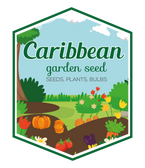
Roman Liquorice SEEDS,GLYCYRRHIZA echinata,
FAST & FREE SHIPPING
Over 90% of our orders are processed and ship out by next business day.
We are currently processing and shipping most orders within 1-3 business days. (backorders not included) Due to high demand during the peak months of January to May, orders may require additional time for packaging /shipment.
Free shipping for orders over $54.95. Excludes live plants, fresh products And Stackable Black Plastic Nursery Crate
Shipping and handling charges will cover outbound freight and packaging materials. Fees are applicable to all orders, based on total order value pre-tax. Expedited services can be selected at Checkout with extra fees.
- Free shipping to lower 48 states on orders $54.95+
- (Most Items), excluding live plants, plant bulbs, and black plastic nursery crate.
- Safe Seed Pledge
- Satisfaction Guaranteed
- Select your desired size and/or color from the available options.
Medicinal plant / beneficial plant / tea herb / culinary herb
The liquorice plant is a legume (related to beans and peas) and is native to the Mediterranean and cultivated in countries such as Greece, Spain and Italy. It is one of the most commonly used herbs in Western herbal medicine and has a very long history of use as both a medicine and as flavouring. Extracts of the root are used to flavour tobacco, beer, soft drinks and pharmaceutical products, often to disguise unpleasant flavours.
Fresh English liquorice is bright yellowish brown; the root being soft and pliable. The root is harvested in the autumn and is dried for later use. The aroma is strongly reminiscent of anise or fennel. The taste is dominantly sweet, warm and medical.
Liquorice plants are not particularly ornamental, with a disquieting habit of folding up their leaves at the end of the day. This perennial plant grows 90 to 180cm (36 to 72in) tall, it an extensive branching root system. The roots are straight pieces of wrinkled, fibrous wood, which are long and cylindrical and grow horizontally underground. Licorice roots are brown on the outside and yellow on the inside.
In our northerly climate the plant rarely flowers, this benefits it's sweet flavour, as once the plant flowers the sweetness of the root is reduced. They are suitable plants to continue to be grown in large pots. This will control their root system and make it simple to access the roots to utilise if desired.
Liquorice requires a deep well cultivated fertile moisture-retentive soil for good root production. Prefers a sandy soil with abundant moisture and does not flourish in clay. Slightly alkaline conditions produce the best plants. The plant thrives in a maritime climate and are hardy to about -15°C (5°F)
Sowing: Sow in spring or autumn under glass
Pre-soak the seed for 24 hours in warm water and sow spring or autumn at around 20°C (68°F) in a greenhouse or cold frame. Seed germination is low and irregular.
Prick out the seedlings into individual pots when they are large enough to handle, and grow them on for their first winter in a greenhouse.
Plant out in well-fertilised soil after last frost in deeply dug fertile moist soil in full sun.
Growing: Keep the soil moist as the seedlings develop. This plant prefers moist, sandy soil. It grows rather slowly at first because of its extensive root system, which takes much of its energy in the first stages of growth. Mature plants self-seed and may spread by rhizomes in good growing conditions; these plants can also be divided in spring or fall. Since this plant has low drought tolerance, it may need watering in dry weather.
Sowing: Before planting, pour 180 degrees F water over the seed and let it soak overnight. In late fall or early spring, direct sow the treated seed 1/4" deep. To start the seed indoors, sow seeds in a flat or individual peat pots 6-8 weeks before the last frost; keep the soil lightly moist and at a temperature of 70 degrees F until germination, which usually occurs within two weeks. When the weather has warmed and the seedlings are well established, transplant outdoors.
Select your desired size and color from the available option
HOW TO GROW GUIDE
LET OUR CUSTOMER SPEAK FOR US

![[Seeds] - Caribbeangardenseed](http://caribbeangardenseed.com/cdn/shop/files/gift-card-gift-card-1_1024x1024_dfa857db-9150-4315-a362-7f0bb3fb9c47_60x28.png?v=1722895789)







